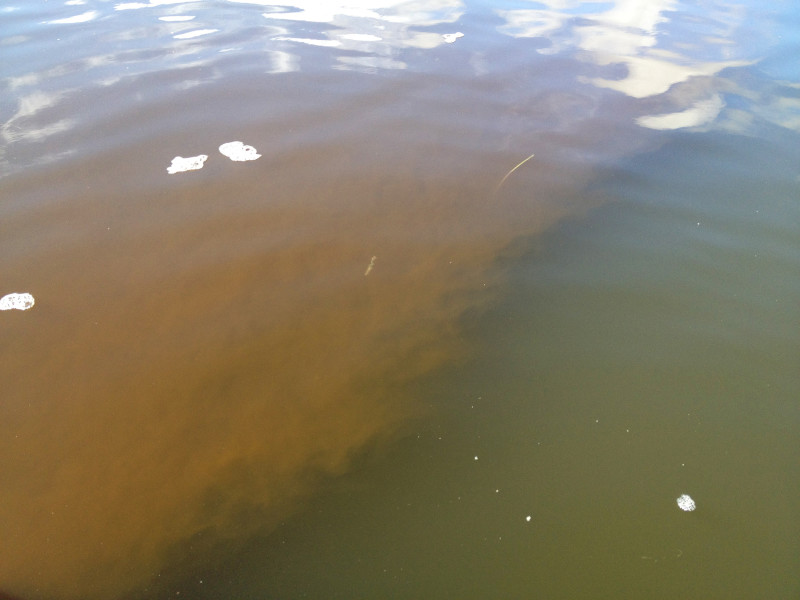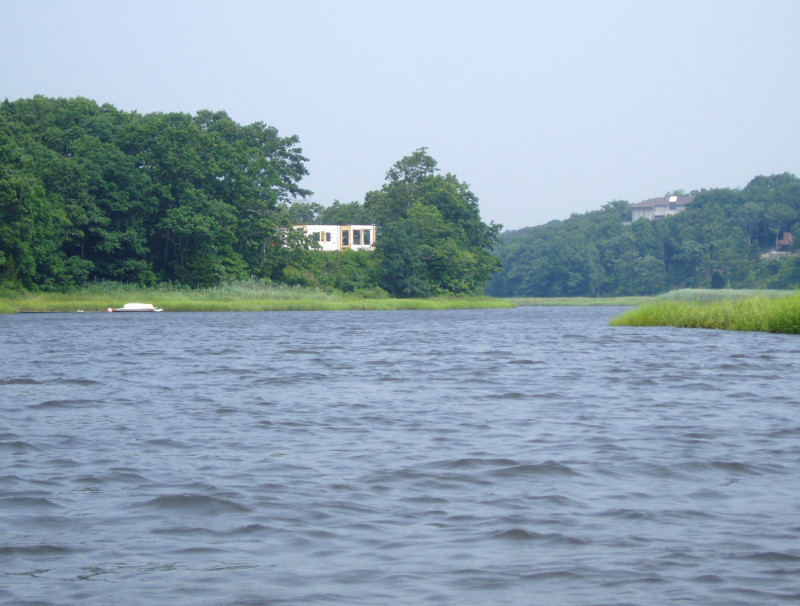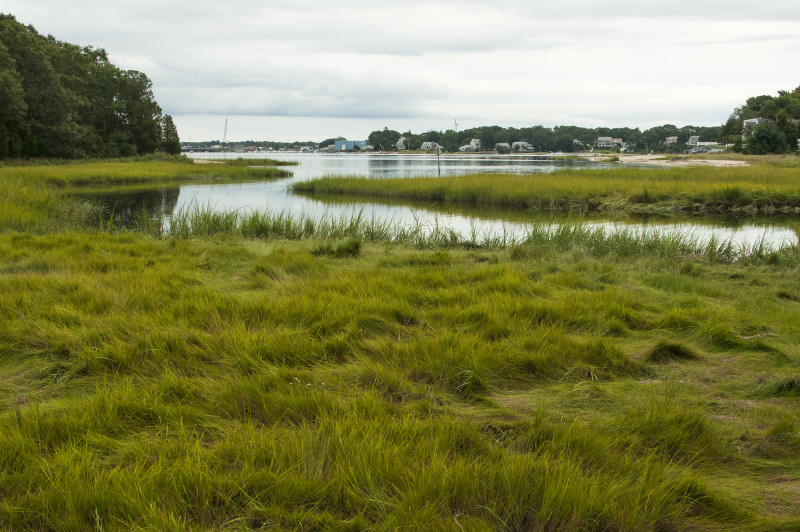With septic system regulations, Wareham leads the way to reduce new nitrogen pollution to Buzzards Bay
Nestled at the head of Buzzards Bay, the town of Wareham is inextricably linked to the water. Each summer, people flock to Wareham’s 54 miles of coastline – places like Onset Beach, Swifts Neck Beach, and Buttermilk Bay – to go swimming, fishing, and boating. Two of Buzzards Bay’s largest rivers – the Wareham River and the Weweantic River – thread through Wareham on their way to Buzzards Bay.
But Wareham’s coastal waters have a serious problem: nitrogen pollution. According to Coalition water monitoring data, most Wareham waterways are in “fair” health at best. That’s not good enough for a town that prides itself on its beaches and coastal communities.
Where is all that nitrogen pollution coming from? One of the main sources is wastewater, including septic systems. Traditional septic systems – the kind most of us have in our backyards if you live in a suburban or rural area – don’t treat nitrogen, so it ends up in our groundwater and rivers.
For the past several years, the Coalition has been working in Wareham to reduce nitrogen pollution and protect clean water. About five years ago, we organized a group of local leaders to come up with solutions to the town’s nitrogen pollution problem. From that process, the town of Wareham decided to take action.
In 2013, the Wareham Board of Health passed new regulations to reduce new sources of nitrogen pollution to its coastal waters. The regulations target septic systems from new construction projects – specifically those near waterways, where pollution is most likely to have an effect. This type of regulation, designed specifically to limit the increase of nitrogen pollution to local waterways, was the first of its kind in the Buzzards Bay region.
It’s been two years since the regulations took effect. So how have they been implemented, and how have they made a difference for the health of Wareham’s water?
We’ll be sharing information on this topic at a free public workshop in Wareham on May 27. In the meantime, keep reading to learn how these regulations were shaped and how they’re helping to protect clean water in Wareham.
Why are Wareham’s coastal waters unhealthy?

Nitrogen pollution can lead to algae blooms like this one in Marks Cove in 2012, called “rusty tide.”
Wareham Health Agent Robert Ethier spent much of his childhood by the water. “The eelgrass was everywhere. There were fish everywhere,” he said, describing conditions in Wareham’s waterways when he was growing up. “I could go down to any shoreline and fill a bushel basket with scallops in twenty minutes with just a regular rake.”
Water monitoring data from the Coalition’s Baywatchers program clearly illustrates how conditions have changed since Ethier’s childhood. Of the 16 waterways in Wareham that the Coalition monitors, nearly half score below 50 on our Bay Health Index: a measure of the overall health of Buzzards Bay’s rivers, coves, and harbors. Places like Little Harbor, Butler Cove, the Agawam River, and the Weweantic River aren’t doing nearly as well as they should be.
Nitrogen pollution has a cascading effect on the health of our local waterways. Combined with warm temperatures, nitrogen pollution fuels the growth of algae that makes the water cloudy and murky. Without enough sunlight getting through the water, eelgrass beds begin to die off. And that affects species like fish, crabs, and bay scallops, which all live among eelgrass beds.
“Now you see nothing but sand,” said Ethier of the beaches where he used to find fish and bay scallops swimming among the eelgrass. “You dig in and there’s nothing there. It’s not like it was.”
Local residents saw the harmful effects of nitrogen pollution in the summer of 2012, when Baywatchers spotted an algae bloom known as “rusty tide” in Marks Cove. As the photo shows, the algae bloom looked like a thick brown cloud coating the water’s surface.
“Community leaders clearly understood that there’s a water quality problem in Wareham caused by nitrogen,” said Coalition Senior Attorney Korrin Petersen, who will be speaking along with Ethier at the May 27 workshop.
Why did Wareham decide to limit new sources of nitrogen pollution?

Wareham’s septic system regulation targets new construction projects near waterways.
The idea to reduce new sources of nitrogen pollution grew out of the Wareham Nitrogen Consensus, a process that brought together local leaders to find solutions to nitrogen pollution. Ranging from municipal officials and business owners to citizens and cranberry growers, participants produced an action plan that spelled out ways Wareham could reduce the amount of nitrogen polluting its local waterways.
“A lot of people were pushing to reduce nitrogen in Wareham waters because of the results of the tests from the Coalition and the Buzzards Bay National Estuary Program,” said Ethier. For several years, the town had been working on a regulation that targeted septic systems for new construction projects in environmentally sensitive areas.
The consensus’ action plan had many recommendations that addressed all of the town’s nitrogen pollution sources: wastewater, septic systems, cranberry bogs, and stormwater runoff. On wastewater, the action plan recommended that any new construction shouldn’t add more nitrogen to the town’s waterways.
“It’s clear that there’s already too much nitrogen in Wareham’s waters,” Petersen said. “New construction only adds to that. So the nitrogen consensus said, let’s reduce pollution from these new sources.”
For two years after the action plan was released, the Coalition worked with the Wareham Board of Health and the Clean Water Committee to develop regulations that targeted nitrogen pollution from new construction. These regulations evolved with community input gathered at public hearings across town.
In January 2013, the Board of Health passed updated regulations to protect the health of Wareham’s waterways. The regulations require that any new septic system installed within 500 feet of a waterway must be a nitrogen-reducing system. These alternative septic systems cut nitrogen pollution in half compared to a traditional system. Within 150 feet of a waterway, no new septic systems are allowed to be installed.
So for any new construction within 500 feet of a waterway, “they either have to have extra land [outside of the five hundred foot buffer zone] or put in a denitrification system – no if, ands, or buts about it,” said Ethier. “It’s as simple as that.”
Wareham’s septic system regulations were the first of their kind and a landmark achievement for the health of Buzzards Bay. As a result of their efforts, the Wareham Board of Health received a 2013 Guardian Award, the highest honor granted by the Coalition for outstanding service to protecting the Bay.
With a grant from the Massachusetts Environmental Trust, the Coalition helped Wareham set up a system to track compliance with these new regulations. Wareham partnered with the Barnstable County Department of Health and Environment, which provides a tracking program for nitrogen-reducing septic systems across Cape Cod.
Since these new regulations were passed, approximately 30 nitrogen-reducing septic systems have been added around town.
How are other towns working to reduce nitrogen pollution from septic systems?

Wareham’s regulation will prevent new septic systems from being installed within 150 feet of waterways.
The Wareham septic system regulation is a model for other Buzzards Bay communities grappling with nitrogen problems. By reducing new sources of nitrogen, Wareham is continuing to find innovative solutions to pollution.
As of now, no other towns around Buzzards Bay have passed regulations like Wareham’s. But the lessons that Wareham learned through this process will be invaluable for other towns that wish to follow Wareham’s lead.
In the meantime, many other coastal communities are addressing nitrogen pollution from septic systems in other creative ways:
- In Falmouth, the Coalition has partnered with the town on a project to upgrade existing septic systems along West Falmouth Harbor to nitrogen-reducing systems.
- In Bourne, a marina on Red Brook Harbor is working to expand sewer service from a new private wastewater facility to nearby homes on septic systems.
Even with these great initiatives, there’s still a lot of work to be done to reduce nitrogen pollution to our local waterways. Wareham’s regulations limit new sources of nitrogen pollution, but they don’t address the many existing septic systems around town.
“These regulations apply to new construction,” Petersen said. “But there are thousands of existing homes that need to address their septic systems.”
To truly make a dent in the pollution problem, Wareham will need to expand sewer lines to homes that are currently on septic systems. Because the town has one of the best wastewater treatment facilities in the region for treating nitrogen, connecting more homes to the plant will make a difference for the health of Wareham’s coastal waters.